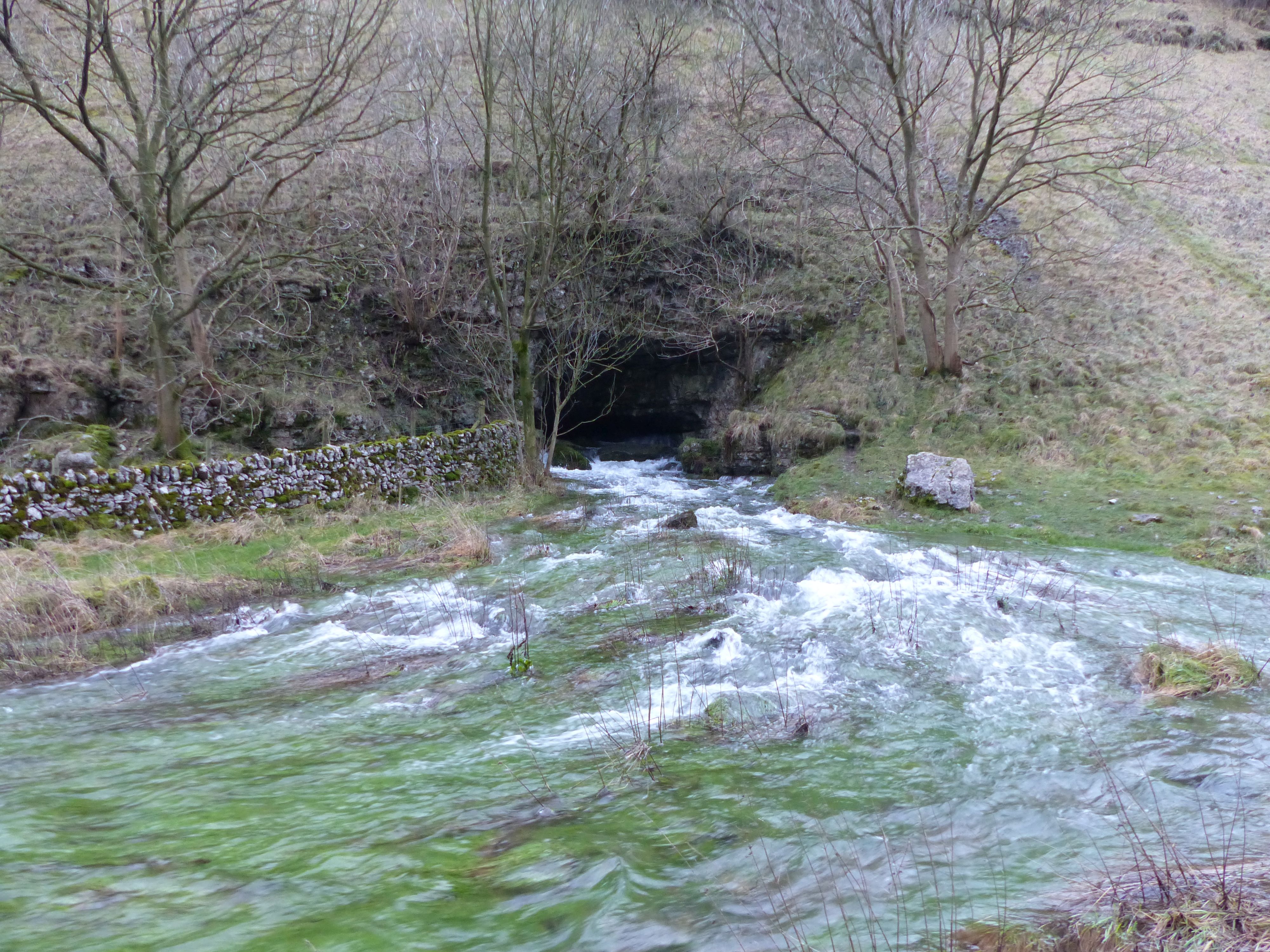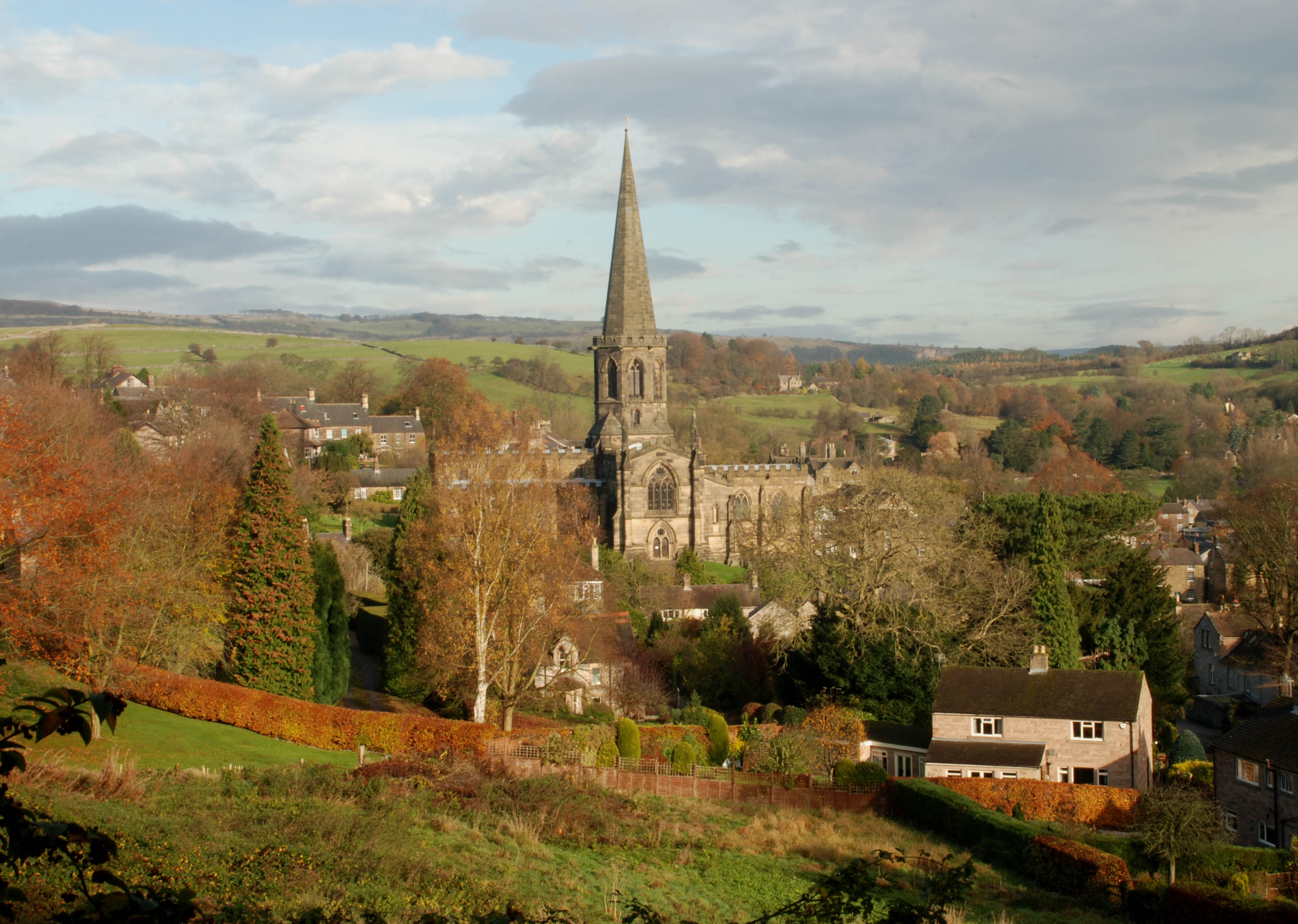|
Conksbury
Conksbury is the site of a deserted medieval settlement between Over Haddon and Youlgreave in Derbyshire, England. History The village was recorded in the Domesday Book of 1086 AD as ''Cranchesberie'' in the hundred of Blackwell'','' in the county of ''Derbyscire.'' The settlement was one of seven ''berewicks'' (surrounding estates) within the royal manor of Bakewell. It was listed as part of the lands owned by William the Conqueror, with the following details documented for Bakewell (including Burton; Conksbury; Holme; Monyash; ether and OverHaddon; One Ash and Rowsley): * Households: 35 villagers. 16 smallholders. 2 priests. 1 men-at-arms. * Farming: 18 ploughlands. 7 lord's plough teams. 11 men's plough teams. * Meadow 80 acres. Woodland 1 by 1 leagues. 1 mill, value 10 shillings and 7 pence. 1 church. 3 church lands. * Tenant-in-chief in 1086: King William * Lord in 1066: King Edward William the Conqueror subsequently granted the manor of Bakewell to the Norman knight ... [...More Info...] [...Related Items...] OR: [Wikipedia] [Google] [Baidu] |
Over Haddon
Over Haddon is a small village and civil parish in Derbyshire, England. The population of the civil parish (including Nether Haddon) at the 2011 Census was 255. It is near the small town of Bakewell, south of the B5055 road. Over Haddon overlooks Lathkill Dale and the River Lathkill, which may be crossed by a clapper bridge on a footpath running south from the village. The bridge may be medieval. The village has two churches, a public house, and a car park. Around the year 1667 Over Haddon was home to Martha Taylor, one of the earliest documented examples of a fasting girl, who claimed to be able to survive for months without food. The name "Haddon" means "Heath Hill", the "Over" referring to being above "Nether Haddon" (Haddon Hall). The site of a deserted medieval village, Conksbury, is on the south bank of the River Lathkill, between Over Haddon and Youlgreave. Over Haddon is the birthplace of Maurice Oldfield, a former head of MI6 and reputedly the inspiration for both Jo ... [...More Info...] [...Related Items...] OR: [Wikipedia] [Google] [Baidu] |
River Lathkill
The River Lathkill is a river in the Peak District National Park in Derbyshire, England. First recorded in 1280, the name "Lathkill" possibly has Scandinavian roots, the old Norse ''hlada-kill'' translating as "narrow valley with a barn". Course In times of high rainfall the source of the river is Lathkill Head Cave (), but in normal conditions the river rises from springs slightly further down the Lathkill Dale valley, close to the village of Monyash, west of Bakewell, and flows generally eastward past the village of Over Haddon and through the village of Alport (where it is joined by the River Bradford) until it meets the River Wye near Rowsley. Roughly six and a half miles from source to outfall, it is the only river in the district that flows over limestone for its entire length. The medieval Conksbury Bridge () now carries the road from Bakewell to Youlgreave. History The dale has a history of lead mining, and among the trees on the north side of th ... [...More Info...] [...Related Items...] OR: [Wikipedia] [Google] [Baidu] |
Bakewell
Bakewell is a market town and civil parish in the Derbyshire Dales district of Derbyshire, England, known also for its local Bakewell pudding. It lies on the River Wye, about 13 miles (21 km) south-west of Sheffield. In the 2011 census, the population of the civil parish appeared as 3,949. It was estimated at 3,695 in 2019. The town is close to the tourist attractions of Chatsworth House and Haddon Hall. History Although there is evidence of earlier settlement in the area, Bakewell itself was probably founded in Anglo-Saxon times in the Anglian kingdom of Mercia. The name Bakewell means a spring or stream of a woman named Badeca or Beadeca, so deriving from a personal name with the Old English suffix ''wella''. In 949 it was called Badecanwelle and in the 1086 Domesday Book ''Badequelle''. The Domesday book listing stated that King Edward held land here; the settlement had a church and a mill. These are the outlying estates or berewicks of the manor: Haddon addon or Over ... [...More Info...] [...Related Items...] OR: [Wikipedia] [Google] [Baidu] |
Middle Ages
In the history of Europe, the Middle Ages or medieval period lasted approximately from the late 5th to the late 15th centuries, similar to the post-classical period of global history. It began with the fall of the Western Roman Empire and transitioned into the Renaissance and the Age of Discovery. The Middle Ages is the middle period of the three traditional divisions of Western history: classical antiquity, the medieval period, and the modern period. The medieval period is itself subdivided into the Early Early may refer to: History * The beginning or oldest part of a defined historical period, as opposed to middle or late periods, e.g.: ** Early Christianity ** Early modern Europe Places in the United States * Early, Iowa * Early, Texas * Early ..., High Middle Ages, High, and Late Middle Ages. Population decline, counterurbanisation, the collapse of centralized authority, invasions, and mass migrations of tribes, which had begun in late antiquity, continued i ... [...More Info...] [...Related Items...] OR: [Wikipedia] [Google] [Baidu] |
St Mary De Pratis
St Mary de Pratis or St Mary de la Pré, meaning ''St Mary of the Meadows'' or ''St Mary in the Meadow'' may refer to one of a number of former Abbeys or Priories established in England, primarily in the 12th century. Most of these establishments are located within The Midlands, England The Midlands (also referred to as Central England) are a part of England that broadly correspond to the Mercia, Kingdom of Mercia of the Early Middle Ages, bordered by Wales, Northern England and Southern England. The Midlands were important in .... References {{DEFAULTSORT:Saint Mary de Pratis Christian monasteries established in the 12th century ... [...More Info...] [...Related Items...] OR: [Wikipedia] [Google] [Baidu] |
Scheduled Monuments In Derbyshire
There are over 500 scheduled monuments in the English county of Derbyshire. In the United Kingdom, a scheduled monument is a "nationally important" archaeological site or historic building that has been given protection against unauthorised change by being placed on a list (or "schedule") by the Secretary of State for Culture, Media and Sport; English Heritage takes the leading role in identifying such sites. Scheduled monuments are defined in the Ancient Monuments and Archaeological Areas Act 1979 and the National Heritage Act 1983. They are also referred to as scheduled ancient monuments. There are about 20,000 Scheduled Monument entries on the list, which is maintained by English Heritage; more than one site can be included in a single entry. While a scheduled monument can also be recognised as a listed building, English Heritage considers listed building status as a better way of protecting buildings than scheduled monument status. If a monument is considered by English Heri ... [...More Info...] [...Related Items...] OR: [Wikipedia] [Google] [Baidu] |
Archaeological Sites In Derbyshire
Archaeology or archeology is the scientific study of human activity through the recovery and analysis of material culture. The archaeological record consists of Artifact (archaeology), artifacts, architecture, biofact (archaeology), biofacts or ecofacts, archaeological site, sites, and cultural landscapes. Archaeology can be considered both a social science and a branch of the humanities. It is usually considered an independent academic discipline, but may also be classified as part of anthropology (in North America – the four-field approach), history or geography. Archaeologists study human prehistory and history, from the development of the first stone tools at Lomekwi in East Africa 3.3 million years ago up until recent decades. Archaeology is distinct from palaeontology, which is the study of fossil remains. Archaeology is particularly important for learning about prehistoric societies, for which, by definition, there are no written records. Prehistory includes ove ... [...More Info...] [...Related Items...] OR: [Wikipedia] [Google] [Baidu] |
Scheduled Monument
In the United Kingdom, a scheduled monument is a nationally important archaeological site or historic building, given protection against unauthorised change. The various pieces of legislation that legally protect heritage assets from damage and destruction are grouped under the term "designation." The protection provided to scheduled monuments is given under the Ancient Monuments and Archaeological Areas Act 1979, which is a different law from that used for listed buildings (which fall within the town and country planning system). A heritage asset is a part of the historic environment that is valued because of its historic, archaeological, architectural or artistic interest. Only some of these are judged to be important enough to have extra legal protection through designation. There are about 20,000 scheduled monuments in England representing about 37,000 heritage assets. Of the tens of thousands of scheduled monuments in the UK, most are inconspicuous archaeological sites, but ... [...More Info...] [...Related Items...] OR: [Wikipedia] [Google] [Baidu] |
Duke Of Devonshire
Duke of Devonshire is a title in the Peerage of England held by members of the Cavendish family. This (now the senior) branch of the Cavendish family has been one of the wealthiest British aristocratic families since the 16th century and has been rivalled in political influence perhaps only by the Marquesses of Salisbury and the Earls of Derby. History Although the Cavendish family estates are centred in Derbyshire, they hold the titles of "Duke of Devonshire" and their subsidiary title of earldom of Devonshire (neither peerage is related to the ancient title of Earl of Devon). The first Earl may have chosen "Devonshire" simply because places and lands he was associated with were already attached to existing peerages at the College of Arms. The title remains associated with "Devonshire" even though in modern usage it is the county of Devon. Another reason for the choice of a non-local or regional name was to avoid antagonising the powerful Stanley family from the Midlan ... [...More Info...] [...Related Items...] OR: [Wikipedia] [Google] [Baidu] |
Cavendish Family
The Cavendish (or de Cavendish) family ( ) is a British noble family, of Anglo-Norman origins (though with an Anglo-Saxon name, originally from a place-name in Suffolk). They rose to their highest prominence as Duke of Devonshire and Duke of Newcastle. Leading branches have held high offices in English and then in British politics, especially since the Glorious Revolution of 1688 and the participation of William Cavendish (then Earl of Devonshire) in the '' Invitation to William'', though the family appears to date to the Norman Conquest of England, with ''Cavendish'' being used (in one form or another) as a surname since the beginning of the 13th century. As a place-name, it is first recorded in 1086. Early history As a place-name, it is first recorded as in 1086 in the ''Domesday Book'', and appears to have a meaning of 'Cafna's Pasture', from personal byname (from 'bold, daring'), and 'enclosed pasture'. By 1201, it was in use as the surname (borne by one Sim ... [...More Info...] [...Related Items...] OR: [Wikipedia] [Google] [Baidu] |






.jpg)
